Features of the selection and placement of plants in the interior of a residential building
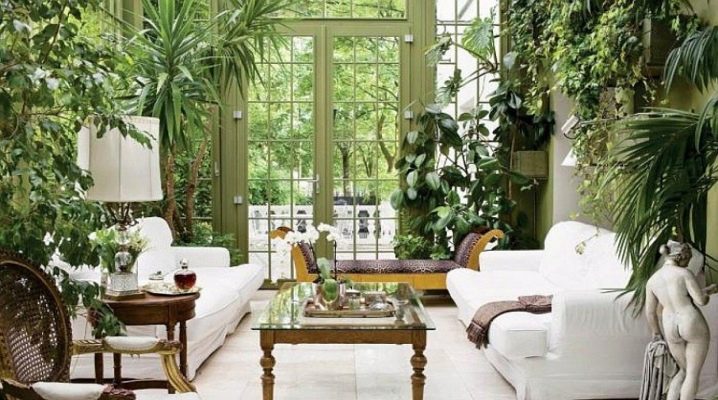
People have always sought to decorate their homes with green plants and fresh flowers. Today this direction is especially relevant, since there are a great many design ideas using plants. They are able to bring harmony to the house, make it cozy, beautiful and unique. The main thing is to take into account the peculiarities of the choice and placement of plants in the interior of a residential building.
Peculiarities
The use of plants inside a dwelling has its own characteristics and helps to solve several problems at the same time.
Live plants:
- add aesthetics to the home;
- are a living filter, purifying the air;
- dispose to rest, relaxation;
- used for zoning space.
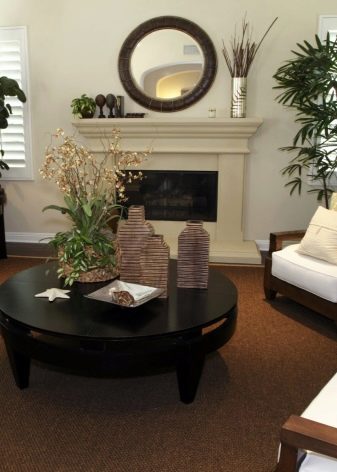
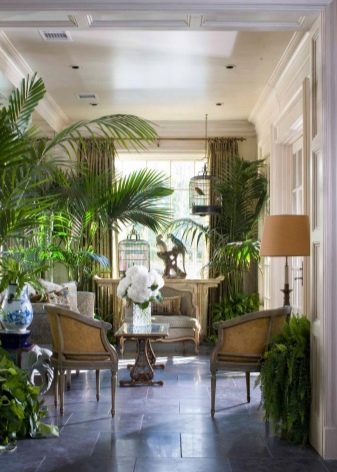
Positive aspects of landscaping
Even when frost crackles outside the window or annoying rain knocks, we can feel like in a summer garden or a blooming greenhouse. And all this is due to living plants.
It is impossible to overestimate their role in the design of a residential building. They decorate the home and at the same time are of great benefit, saturating the air with oxygen and absorbing carbon dioxide.
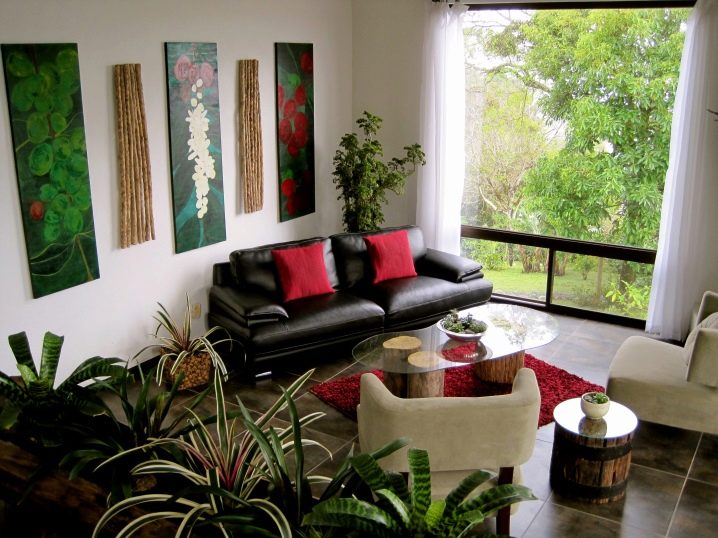
And this is not all the benefits that they can bring. Green spaces improve our well-being, especially urban dwellers who need them, who cannot afford to just go out into the forest or wander through the park. Fresh bright greenery and aroma of flowers can cheer anyone up.
But with all the love for plants, you need to design your home so that everything is organically combined with each other: flowers, decor, furniture. You need to choose a certain style and stick to it.
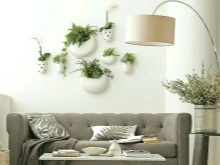
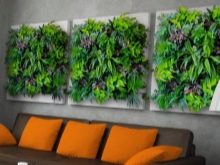
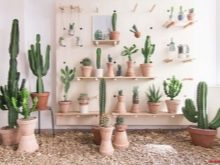
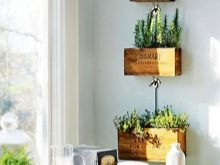

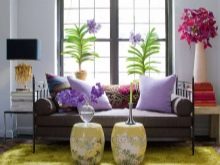
In addition, you need to know which plants live well together and which cannot coexist. Some need a lot of sun, for others, on the contrary, direct rays are undesirable. Some need abundant watering, while others are contraindicated in excess moisture. You should also think about the containers in which the plants live. Vases and pots should be suitable for the size of the root system. All these nuances must be taken into account. And then your plants will bring you only positive emotions.
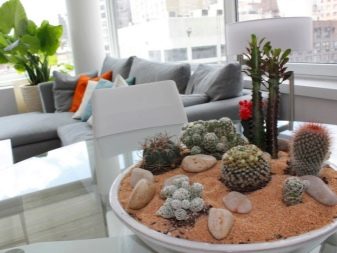
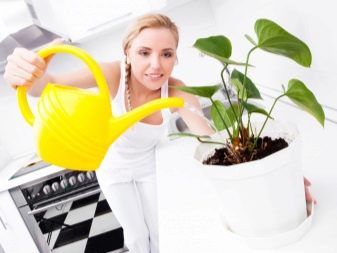
How to choose a plant
Indoor plants have firmly taken their place in the design of housing. Their choice is so great that it is very easy to get lost in this variety. Therefore, you need to imagine what style you prefer, and, based on this, choose flowers.
Today, the orchid is especially popular; it will decorate any interior. And its colors and shades are striking in their diversity - white, blue, purple, pink, yellow.


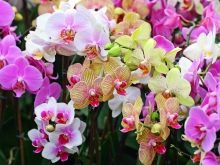

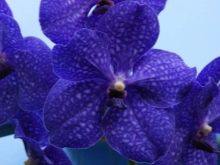
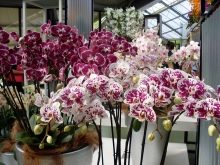
Camellia can be attributed to the same blooming and pleasing beauty. Many pay tribute to fashion and decorate their space with such species as clivia, stephanotis, ehmeya, gardenia.

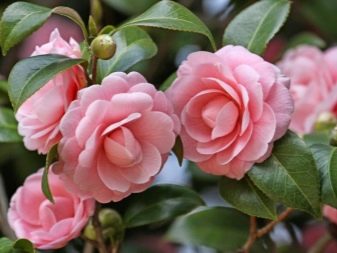
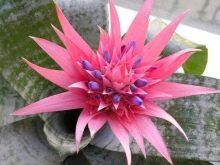
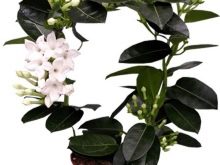
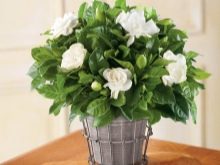
The exotic does not lose its relevance. Palma, monstera, dracaena fell in love with many. Someone prefers to use hippeastrum and anthuriums in their interior.
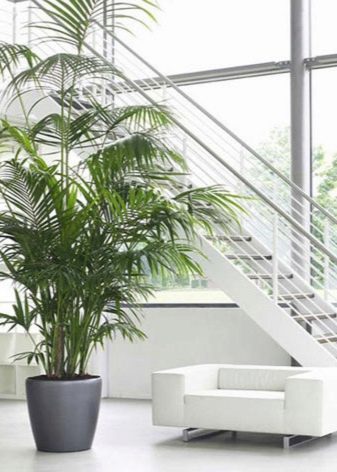
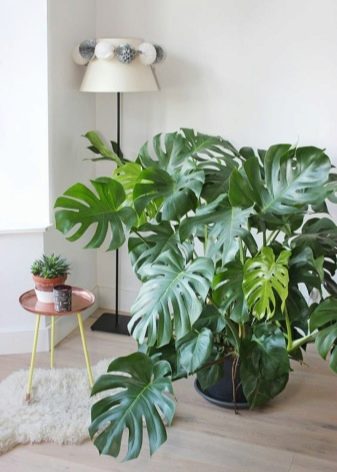
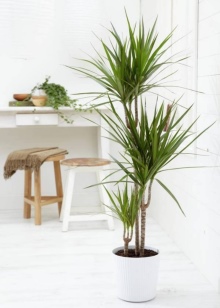
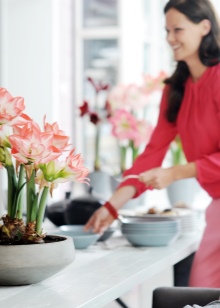
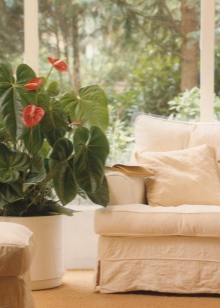
Those who prefer large plants choose yucca and bokarnea bent.
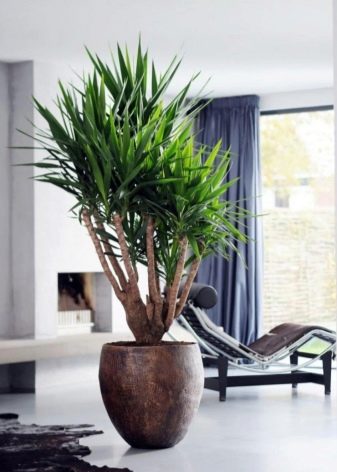

Ficus is considered a favorite among the green counterparts. They are often decorated with houses, thanks to its bright foliage, it pleases the owners all year round. It's easy to look after him. In addition, it purifies the air by releasing biologically active substances.
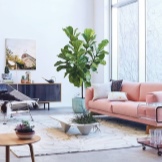
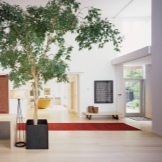

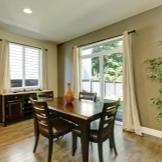
Dracaena and violets are considered good humidifiers. They also brighten up any space beautifully.
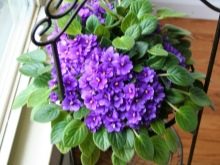

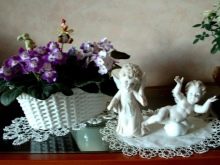
In the design of various premises, both single plants and compositions are used. It all depends on the space to be decorated.
Not so long ago, using artificial flowers seemed like something old-fashioned.devoid of taste. All due to the fact that they were made from the simplest cheap materials. Now the imagination of manufacturers of this type of decor knows no bounds. And artificial flowers are visually very difficult to distinguish from living ones.
For many, their use is considered convenient, since they do not require maintenance, apart from wet cleaning. But they will not be appropriate in every room; all the interior features must be taken into account.
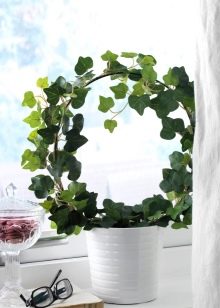
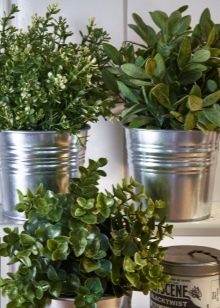
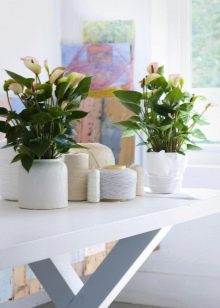
In premises for various purposes
When decorating your house or apartment, think carefully about which houseplants are suitable, for example, for a living room, bedroom, kitchen, hallway.
Before embodying your ideas, find out if a particular room is suitable for a particular flower in terms of the presence of light, humidity, air and other criteria. Learn how to care for a plant so that you can save yourself from unnecessary troubles and worries later. Unfortunately, not everyone has flowers. If your style is minimalist, ficus is for you. An unpretentious plant will brighten your living room and supply it with oxygen. Other plants with thicker stems will look good too.
Classic houseplants include monstera and saintpaulia.
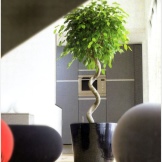
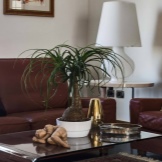
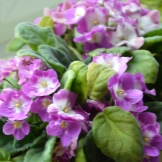

Do not overload the space with flowers, even if you love them very much.
You shouldn't have a blooming garden in the bedroom. It is enough to accommodate species such as aloe and Kalanchoe. They will create a wonderful microclimate. If the size of the bedroom is small, and there is no room for floor plants, you can place small pots on the bedside tables, dressing table, windowsill. Leave lilies and ferns for other rooms. Their ability to absorb oxygen at night and emit carbon dioxide will not do you any good.

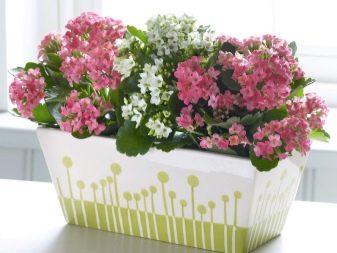
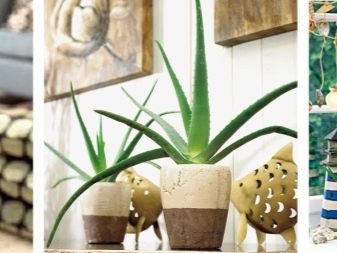
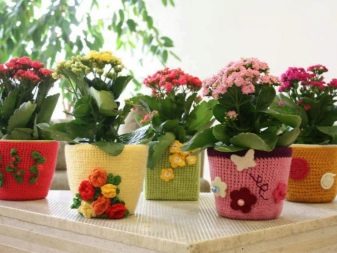
Almost all housewives love to decorate the kitchen, and rightly so. After all, the whole family gathers here for lunch or evening tea. Therefore, it should be nice and cozy here.
Choose plants wisely, and decorate the kitchen correctly so that green spaces do not interfere with you, but at the same time create a mood.
Heat-loving plants will take root here. If you plan to place some of them on the windowsill, then choose those that need light.

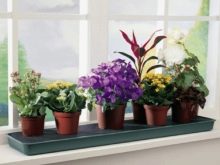
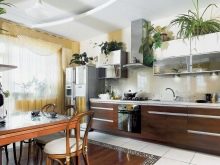
The stove and sink are not the places where flowers will be comfortable.
Strongly variegated and lush vegetation is best avoided, as are flowers that have a strong scent. Here you can experiment, try the style that is closer to you: minimalism, modern, oriental luxury.
Usually bouquets of fresh flowers look great in the kitchen. Sunflowers, poppies, tulips. Choose what is closer to you. Compositions of dried flowers will also be appropriate. You can use wall garlands and ikebana.

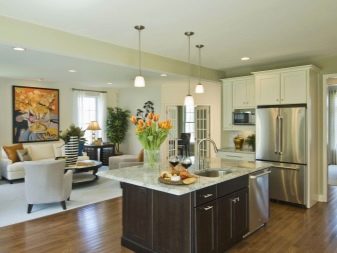
You can create coziness and harmony even in the bathroom. And delicate ivory orchids will help with this.
Another place where flowers are quite appropriate is the hallway. Nothing limits you in your choice, if there is enough light in the hall. But most often this is not the case, so it is better to place shade-loving specimens here. It can be fatsia, peperomia, arrowroot, dracaena, sansevier.
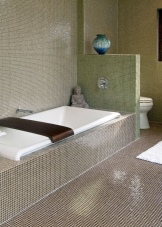
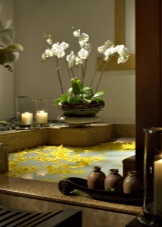

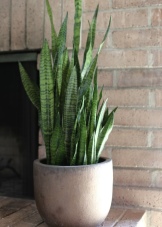
If you have a spacious hallway, decorate it with ferns. If there is a problem with the place, then small flowers on the shelves and special stands will look very harmonious.
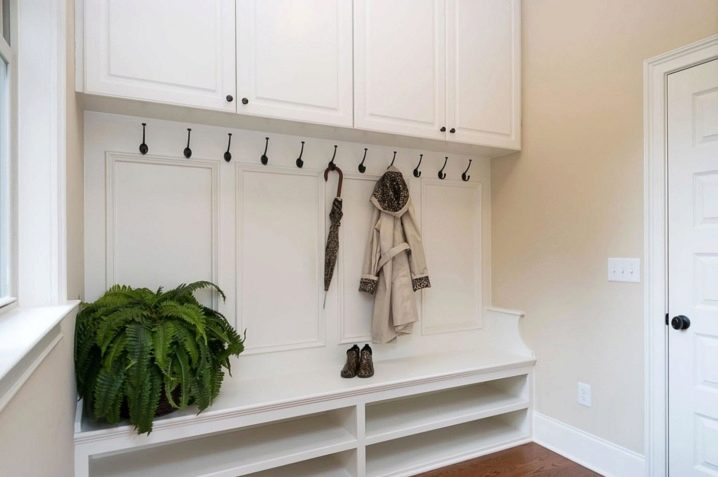
Recommendations
The art of decoration can transform your space. Feel like an artist, don't be afraid to experiment and use original decor.
Spring is a great occasion to place flowering cherry or apple branches in tall vases.
Summer gives you the opportunity to enjoy the beauty and smells of bouquets of roses, lilies, peonies. They can be placed both on the writing table in the study and on the dining room in the dining room.
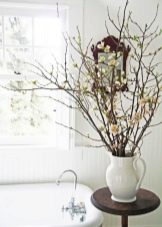

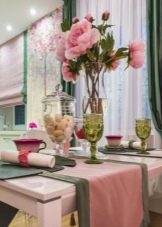
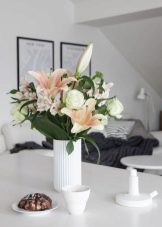
Giving preference to lively colors, it would be good to maintain the color scheme and the general style of the apartment or house.
Several small vases or flowerpots of flowers can make an interesting composition.
If you're creative, you can turn old pots and cans into original plant containers.
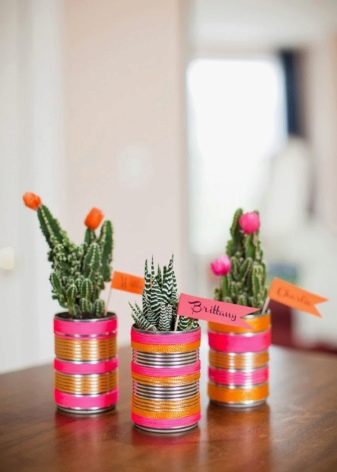
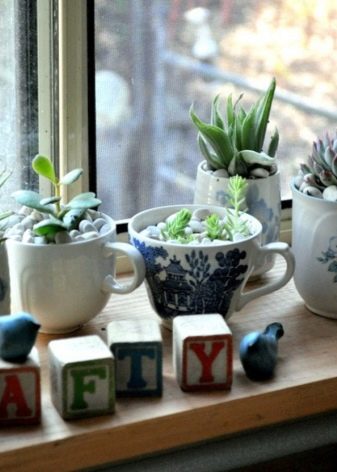
Check out a few tips that you may find useful when decorating your home.
One beautiful plant can brighten a room and be eye-catching all the time. But if you add several other types to it, it can lose its attractiveness.
Small plants should not be placed with a large tree. They will be lost even if they are extraordinarily beautiful. It will be better if you create an ensemble out of them.
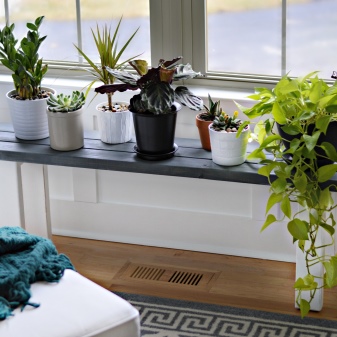
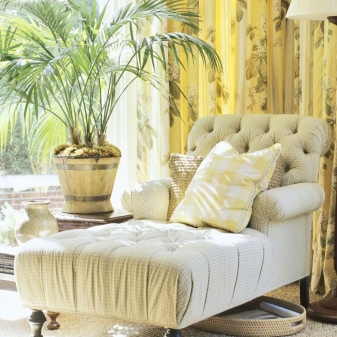
Find the perfect container for each flower. There are many options: baskets, decorative pots, pots.
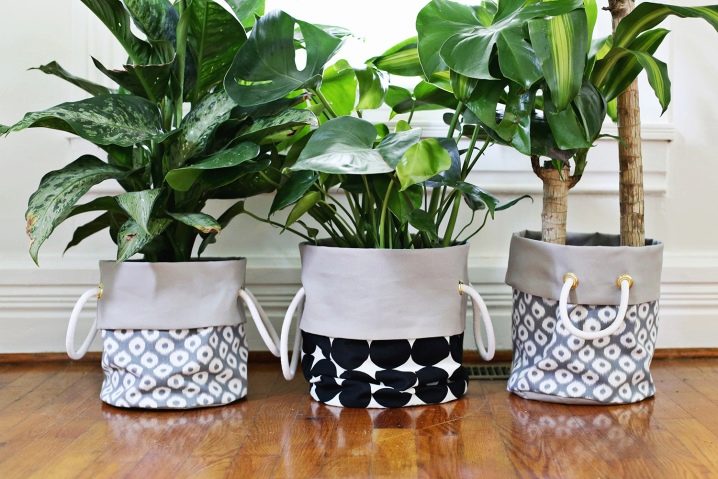
And think over exactly where the plant will be - on the windowsill, shelf, coffee table, dressing table.
There are indoor plants that delight with their long and frequent flowering. These include delicate violets, lush geraniums, and large-flowered fuchsias. These representatives of the flora have a lot of varieties, which allows you to choose the color and size that you prefer to see every day in your rooms.
Climbing plants can revive the interior and add coziness: tradescantia, asparagus, chlorophytums. With their help, you can decorate an empty wall or part of furniture, create a shadow on the window, they can braid all kinds of supports.
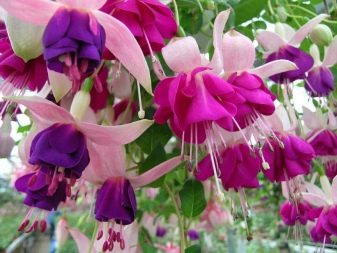
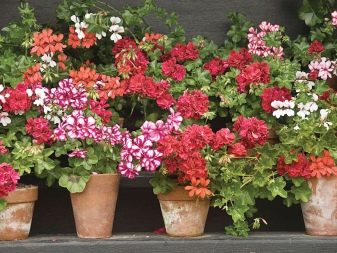
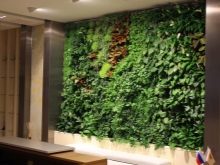

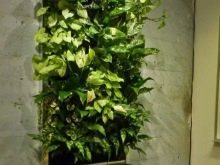
If you are looking for a twist, look out for yucca, dracaena, and cicas. Looking like palm trees, these compact plants will look original in any setting.
Remember that very large plants are only appropriate in spacious rooms. Lemon, orange, coffee trees, dieffenbachia will create a special mood. Halls, halls, greenhouses, swimming pools are suitable for their placement. They will definitely not decorate a small room, but will only create problems and feel uncomfortable.

Nowadays, many are fascinated by the idea of creating a vegetable garden right in the kitchen. People grow spices and herbs in small pots. All this looks very appropriate in the kitchen and is useful.
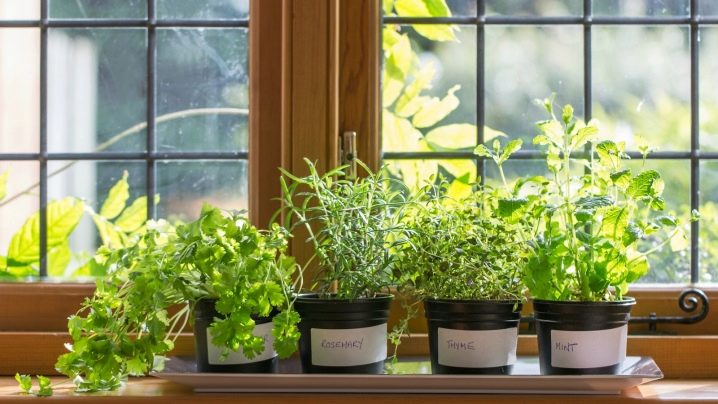
Beautiful examples in the interior
With the help of indoor plants, you can make your apartment attractive, stylish, cozy, where both you and your guests will be very comfortable and pleasant to be.
And for this you need to master such a simple science as phytodesign. And then you will be able to create magnificent compositions and beautiful oases, which will become bright splashes even on the grayest weekdays and will cheer you up even on a cloudy and rainy day.
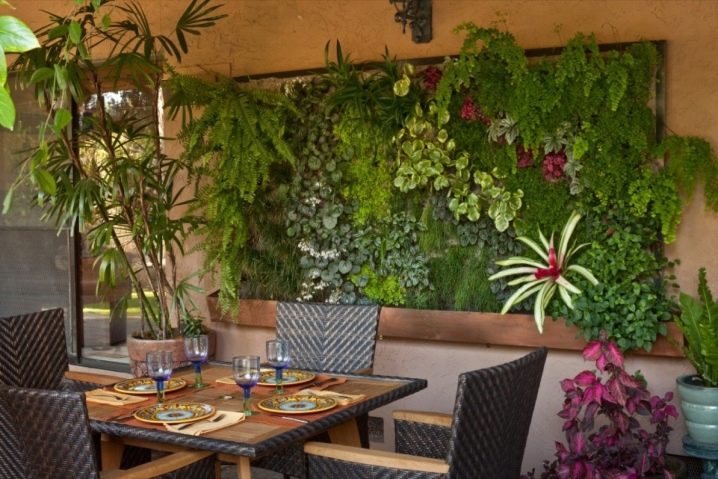
Let's take a look at some good examples:
- The bottom of the trunk in the floor cart can be decorated with moss or green vines.
- A composition of several potted flowers can be placed on the windowsill. If we do this on the floor, then in the center there should be a specimen slightly larger than its counterparts. The rest are arranged in a tiered order, it is desirable that flowering plants are present there.
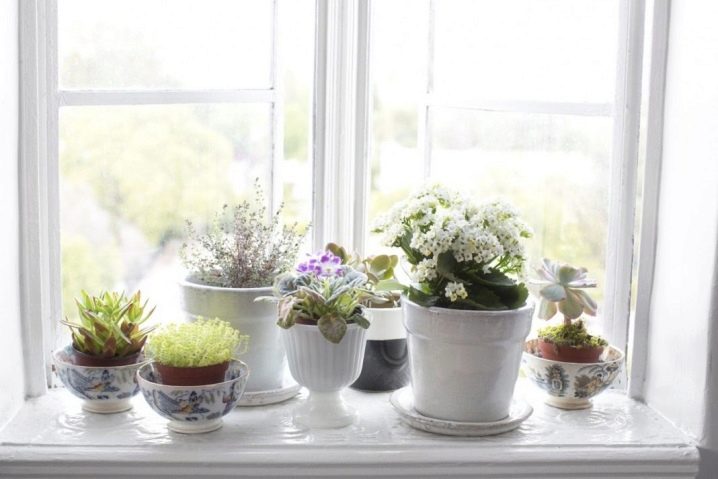
- Phytodesign is a constantly evolving area, over time, original novelties appear, which are quickly gaining popularity among flower growers. Thanks to this, you can embody your most daring ideas and feel like designers in your own apartment.
- One of these novelties is florariums. Tropical plants are located inside the transparent vessels. Another fashionable direction of rutaria. The basis for the installation of plants in pots are tree branches, stumps, roots. It all looks very unusual and at the same time natural.
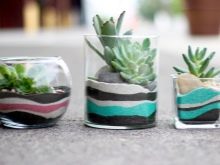
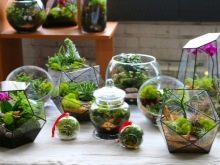

- As for the color scheme, then you yourself will determine what will be best combined with your wallpaper, curtains, furniture and other parts of the interior. But there are a few versatile shades that can suit many.
- So, in the kitchen, plants of yellow and green colors will create a special cheerful mood, as well as coziness and comfort. Fragrant and fragrant flowers will complete the look.
- Roses, irises and freesias will bring peace and relaxation in the bedroom. You will be pleased to be among these flowers.

- White, yellow and pink flowers will give you a feeling of harmony. A romantic setting calls for red splashes. Also, bright flowers will give energy and strength. Blue and purple plants will relieve stress and fatigue.
- Lilac will give you freshness; it is recommended to place it in a vase with a wide neck. In addition, it will serve as a good background for other plants. And you can supplement it with a sprig of viburnum.
- Dahlias look light and fresh, they do not fade for a long time and look very natural in any room. Several shades can be collected in a vase, and this will give liveliness to the interior.
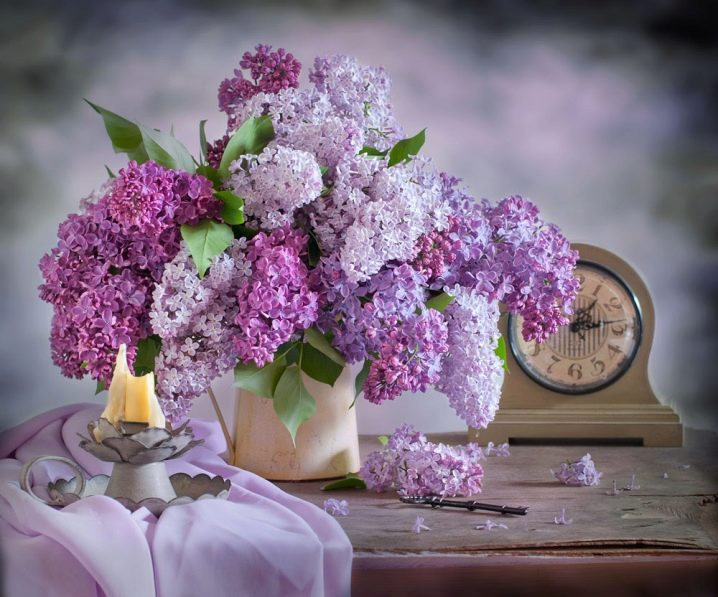
- Wildflowers in wicker baskets will add romance, and chic buds in graceful vases will add sophistication.
- Roses have special requirements: light flowers harmonize well with white vases. Dark tones look elegant in black, silver and gold vessels.
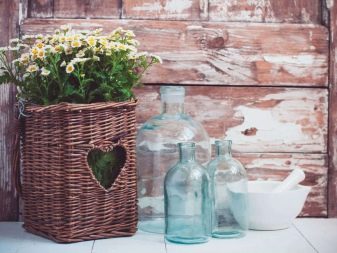
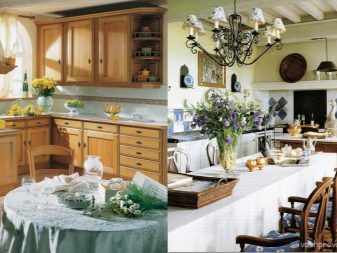
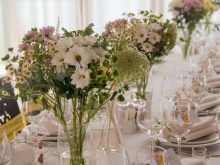
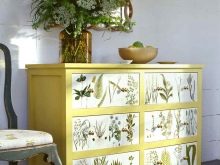
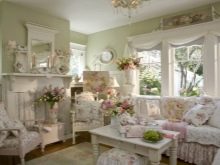
- Small orchids and exotic herbs will be left to those who prefer unusual solutions.
There are many options. Plunge into the wonderful world of flowers and create your own unique oasis in your apartment or house.
For information on how to make a florarium with your own hands, see the next video.













The comment was sent successfully.